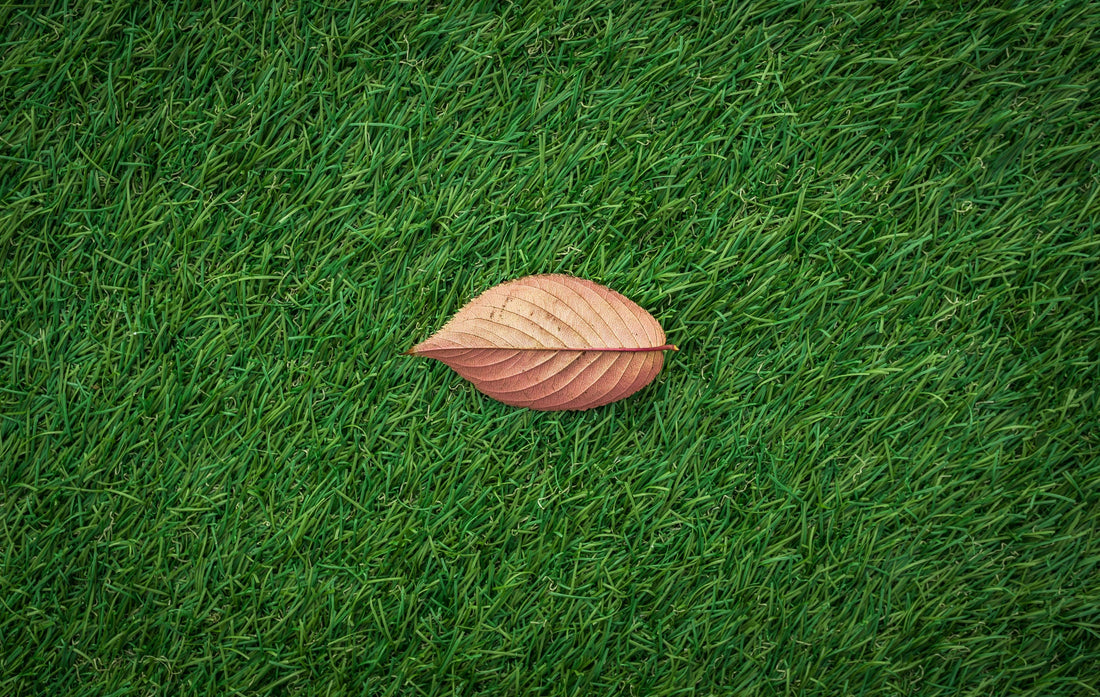As lawn care experts, we know that achieving a lush, green lawn requires careful planning and execution. If you're pondering the question: “what do you put down first grass seed or fertilizer?”, you've come to the right place. This is an important decision that can significantly impact the success of your lawn.
In this article, we'll dive deeper into the specifics of lawn preparation, including soil testing, aeration, and watering, and discuss the best practices for applying grass seed and fertilizer.
So, if you're ready to transform your lawn into a vibrant, healthy oasis, continue reading. A well-planned approach can make all the difference in achieving a beautiful lawn!
What this article covers:
- Do You Put Down Grass Seed or Fertilizer First?
- Preparing Your Lawn for Seeding and Fertilizing
- Applying Starter Fertilizer for New Lawns
- Applying Grass Seed Before Fertilizer for Existing Lawns
Do You Put Down Grass Seed or Fertilizer First?
From our experience, the answer depends on the condition of your lawn and your specific goals.
For new lawns, applying a starter fertilizer, such as our own, before or at the same time as grass seed is crucial. This provides the necessary nutrients, such as phosphorus, to support seed germination and root development.
For existing lawns that require overseeding, it is often more beneficial to apply the grass seed first. Once the seeds are in place, you can follow up with a suitable lawn fertilizer to provide the new seedlings with a nutrient boost necessary for growth.
This method helps the grass seed to establish itself and then benefit from the additional nutrients provided by the fertilizer. By understanding the specific needs of your lawn, you can ensure a lush, healthy lawn.

Preparing Your Lawn for Seeding and Fertilizing
Proper preparation is key to a successful lawn. Here are some essential steps to take before applying grass seed or fertilizer:
Test Your Soil
As per our expertise, testing your soil is the first step in preparing your lawn. A soil test will reveal its pH level and nutrient content, helping you determine the right type of fertilizer to use.
We recommend using our soil test kit. Begin by surveying your lawn and identifying any weak areas. Using the soil plugger, insert the plugger into the soil, wiggling side to side until it reaches the bottom.
Remove any excess lawn and thatch from the soil core before placing it into the sample bag. Collect up to one cup of soil samples in total.
Drop the provided mailer into your mailbox and leave the flag up. That's it! Our lab will process your samples in 10-14 days, and we will contact you with your soil analysis and explain any necessary corrections.
Aerate Your Lawn
Aerating your lawn improves soil compaction and allows water, air, and nutrients to penetrate deeper. Our findings show that aerating before seeding and fertilizing enhances the overall health of your lawn.
This process involves perforating the soil with small holes to enable essential elements to reach the grass roots more effectively. By doing so, you promote deeper root growth and increase the lawn's resilience to drought and foot traffic.
Regular aeration can also help reduce thatch buildup and alleviate soil compaction, ensuring that your lawn remains lush and healthy.
Whether using a manual or mechanical aerator, the key is consistency and proper timing to maximize the benefits.
Water Your Lawn
Based on our observations, watering your lawn before applying grass seed or fertilizer ensures the soil is moist and ready to absorb nutrients.
Proper watering techniques are crucial for the health of your lawn. It's best to water deeply and infrequently, which encourages deep root growth and makes your lawn more drought-resistant.
However, what happens if you apply fertilizer to wet grass? While slightly moist grass is ideal, excessively wet grass can cause fertilizer to run off or not be absorbed properly.
This can lead to nutrient waste and potential lawn damage. Therefore, it's important to strike the right balance, ensuring your grass is moist but not overly saturated before fertilizing.

Applying Starter Fertilizer for New Lawns
- Measure Your Area: Begin by measuring the area of your lawn to ensure you have enough starter fertilizer for the entire space.
- Prepare the Soil: Lightly rake the soil to create a smooth surface. This helps the fertilizer make good contact with the soil.
- Apply the Starter Fertilizer: Evenly distribute the starter fertilizer across your lawn. This type of fertilizer has a balanced mix of nitrogen, phosphorus, and potassium, essential for promoting seed germination and root growth.
- Rake Again: Lightly rake the soil again to mix the fertilizer into the top layer. This helps the nutrients to be absorbed more effectively.
- Water Your Lawn: Water the lawn thoroughly after applying the fertilizer. This ensures the nutrients are activated and start benefiting the soil and seeds. Wondering “will fertilizer burn grass if not watered?” Yes, it can. Proper watering is crucial to avoid burning the grass.
- Sow the Grass Seed: Once the soil is prepared and fertilized, it's time to sow the grass seed. Spread the seeds evenly across the lawn.
- Water Again: After seeding, water the lawn lightly to settle the seeds and help them start to germinate.
Following these steps will provide the soil with the nutrients it needs to support new grass seedlings and help you achieve a lush, green lawn.

Applying Grass Seed Before Fertilizer for Existing Lawns
- Mow the Lawn: Start by mowing your existing lawn to a shorter height. This allows the grass seed to make good contact with the soil.
- Rake the Lawn: Lightly rake the lawn to remove any debris, dead grass, or thatch. This creates a smoother surface for the grass seed.
- Aerate the Lawn: Aerating helps to relieve soil compaction and create spaces for the grass seed to settle in. This step also improves the penetration of water, air, and nutrients.
- Spread the Grass Seed: Evenly distribute the grass seed over the lawn, focusing on bare spots and thin areas. Ensure you use the right amount of seed for the area.
- Water the Lawn: Water the lawn lightly but thoroughly to help the grass seed settle into the soil. Make sure the soil remains moist but not overly saturated.
- Apply Fertilizer: Once the grass seed has been sown and watered, apply a suitable fertilizer. This provides essential nutrients that promote seed germination and root growth. This method helps the new grass to establish itself and benefits from the nutrients provided by the fertilizer, resulting in a denser, greener lawn.
- Continue Watering: Keep the soil consistently moist to encourage seed germination. Be cautious not to overwater, which can cause the seeds to wash away.
Following these steps will help fill in bare spots and promote a healthier, thicker lawn.
Conclusion
Achieving the perfect lawn starts with making informed decisions about whether to put down grass seed or fertilizer first.
For new lawns, using a starter fertilizer provides essential nutrients to boost seed growth and establish strong roots.
When overseeding an existing lawn, applying grass seed first and then following up with fertilizer ensures the new grass can thrive and fill in bare spots, leading to a lush, green lawn.
By following these steps, you'll transform your lawn into a vibrant and healthy space. For more expert tips and high-quality lawn care products, visit Lawn Synergy. Happy lawn care!
If you want to learn more, why not check out these articles below:
- Best Fall Lawn Fertilizer
- Best Fertilizer to Make Grass Green
- What Lawn Fertilizer Is Safe for Well Water
- What Does Fertilizer Do for Grass
- Liquid vs Granular Lawn Fertilizer
- Can You Put Starter Fertilizer on Existing Grass
- Lawn Food vs Fertilizer
- Do I Need to Fertilize My Lawn?
- Is Lawn Fertilizer Toxic?
- Is It Ok to Fertilize Lawn in Hot Weather
- Can You Fertilize Dormant Grass
- Germination of Grass Seed
- How Does Grass Grow?
- How Much Fertilizer for Lawn?
- Will Fertilizer Kill New Grass?

